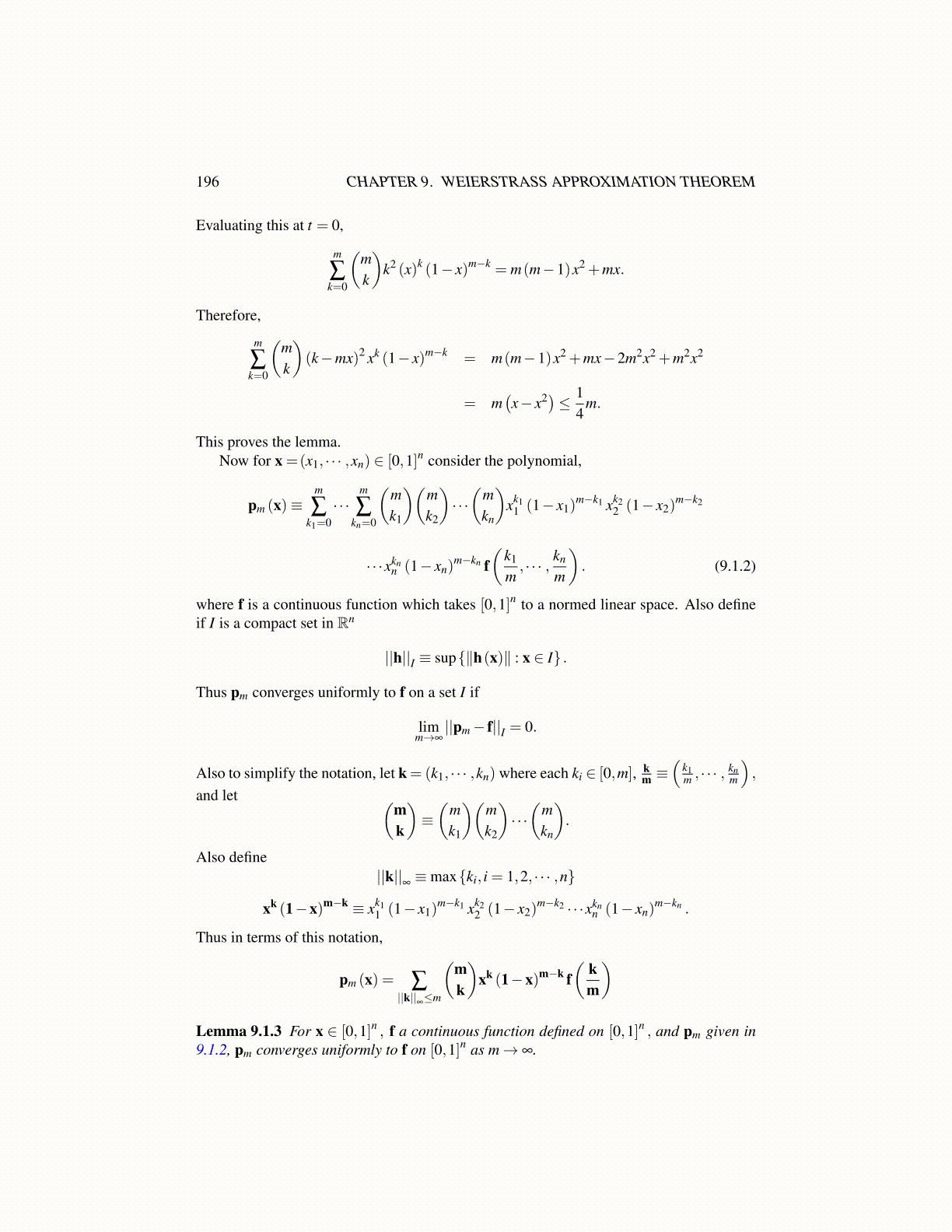
196 CHAPTER 9. WEIERSTRASS APPROXIMATION THEOREM
Evaluating this at t = 0,
m
∑k=0
(mk
)k2 (x)k (1− x)m−k = m(m−1)x2 +mx.
Therefore,
m
∑k=0
(mk
)(k−mx)2 xk (1− x)m−k = m(m−1)x2 +mx−2m2x2 +m2x2
= m(x− x2)≤ 1
4m.
This proves the lemma.Now for x =(x1, · · · ,xn) ∈ [0,1]n consider the polynomial,
pm (x)≡m
∑k1=0· · ·
m
∑kn=0
(mk1
)(mk2
)· · ·(
mkn
)xk1
1 (1− x1)m−k1 xk2
2 (1− x2)m−k2
· · ·xknn (1− xn)
m−kn f(
k1
m, · · · , kn
m
). (9.1.2)
where f is a continuous function which takes [0,1]n to a normed linear space. Also defineif I is a compact set in Rn
||h||I ≡ sup{∥h(x)∥ : x ∈ I} .
Thus pm converges uniformly to f on a set I if
limm→∞||pm− f||I = 0.
Also to simplify the notation, let k = (k1, · · · ,kn) where each ki ∈ [0,m], km ≡
(k1m , · · · , kn
m
),
and let (mk
)≡(
mk1
)(mk2
)· · ·(
mkn
).
Also define||k||
∞≡max{ki, i = 1,2, · · · ,n}
xk (1−x)m−k ≡ xk11 (1− x1)
m−k1 xk22 (1− x2)
m−k2 · · ·xknn (1− xn)
m−kn .
Thus in terms of this notation,
pm (x) = ∑||k||∞≤m
(mk
)xk (1−x)m−k f
(km
)
Lemma 9.1.3 For x ∈ [0,1]n , f a continuous function defined on [0,1]n , and pm given in9.1.2, pm converges uniformly to f on [0,1]n as m→ ∞.